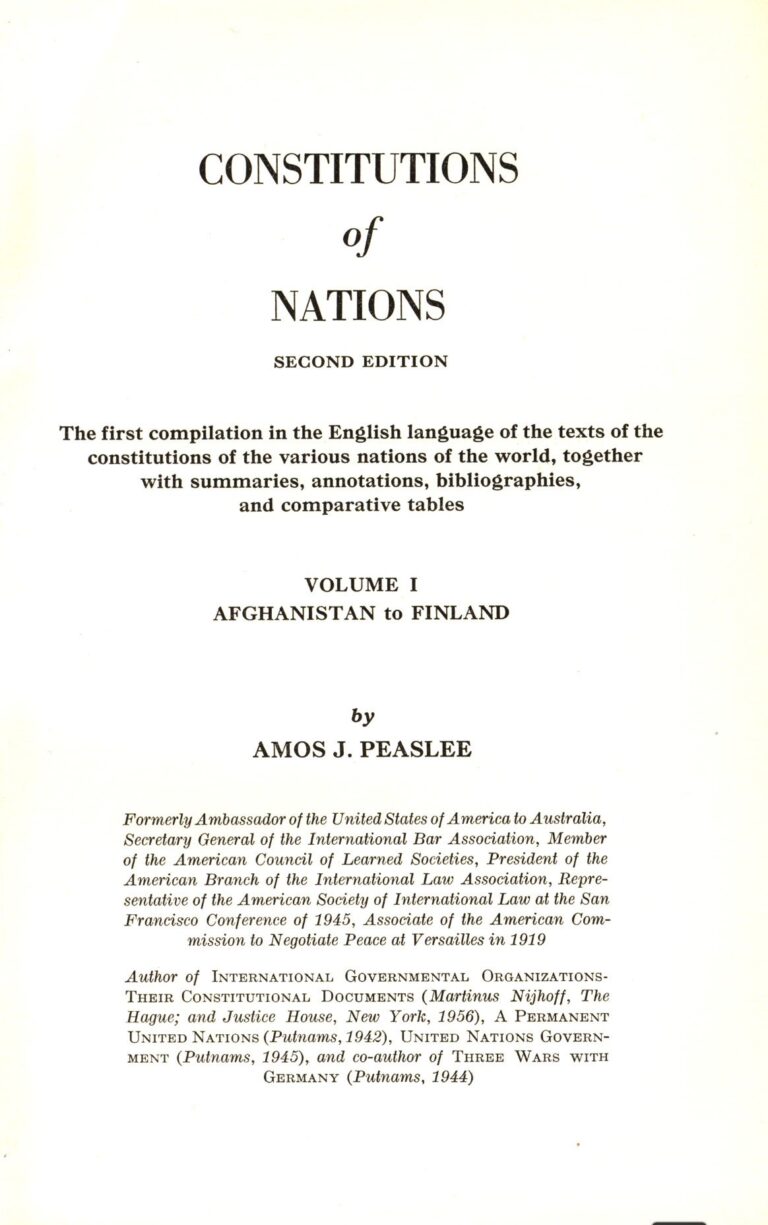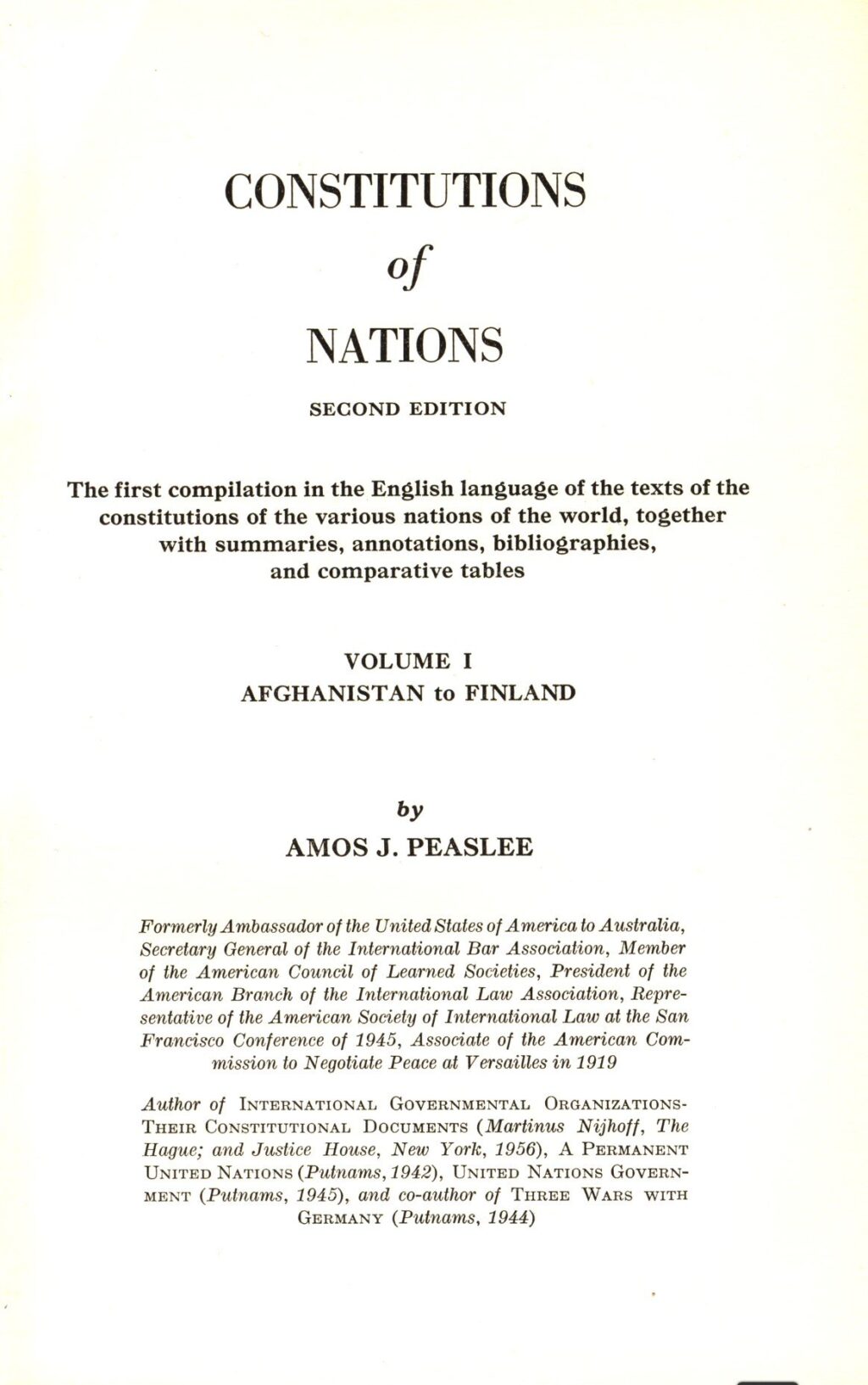Amos J. Peaslee, Constitution of Nations (1956)
Amos Jenkins Peaslee was a leading legal thinker who served as the United States Ambassador to the Australian Government from 1953-1956.
Born in New Jersey in 1887 to a family of Quakers, Peaslee graduated from law school at Columbia University in 1911 and quickly became a leading figure in the American Bar Association. When America entered the Great War in 1917, Peaslee enlisted in the United States Army, and he was subsequently given the task of establishing the ‘Silver Greyhounds’ – a diplomatic courier service responsible for carrying sensitive correspondence between France and Washington. At the war’s conclusion he served as an Associate of the American Commission to Negotiate Peace at Versailles in 1919 – even procuring his own personal copy of the Peace Treaty which he later donated to the Department of State Archives.
His time at Versailles ignited a passion for international law, which would see Peaslee become Secretary General of the International Bar Assocation, President of the American Branch of the International Law Association, and Representative of the American Society of International Law at the San Francisco Conference of 1945. This background and experience combined with an active involvement in Republican Party politics was what convinced President Eisenhower to appoint Peaslee to the Ambassador position in Australia.
Peaslee’s relationship with Menzies was reasonably cordial, as he left before the outbreak of the Suez Crisis soured Menzies’s dealings with the Eisenhower administration. Though even during Peaslee’s tenure there were tensions over how to respond to the Taiwan Straits Crisis, with Peaslee directly rebuking Menzies for suggesting a limited form of international recognition for the Chinese Communist Government. Notably, while Menzies has all three volumes of Constitution of Nations, none of them are personally inscribed by the editor, perhaps suggesting that the two men were not as close as they otherwise could have been.
Nevertheless, Menzies’s copy of the book is still an interesting artefact, because it speaks to a unique moment in the evolution of a post-colonial order which Menzies had to come to terms with as Australia’s prime minister. The premise of the book was to collate the written constitution of every nation on earth (which at the time numbered 83) and make them all accessible in English – a monumental task which was all the more pressing considering that at the time of the book’s publication 40% of all written national constitutions were less than five years old. America’s was in fact the oldest, and even ‘young and free’ Australia was comparatively an elder constitutional statesman amidst the immense changes wrought by the 20th century.
In the foreword, Peaslee explains that: ‘The present effort is intended for the use of persons primarily interested in present day problems of world government. Since the process of constitution-building—both international and national—is likely to be a major interest and occupation for some years yet to come, it is hoped that these volumes may find a welcome among statesmen and public officials, lawyers and jurists, business men and labor leaders, educators and students.’
Since the volumes are arranged in alphabetical order, the Australian Constitution appears quite early on, and we are described as ‘one of the self-governing members of the British Commonwealth of Nations’. We are listed as one of the seven Dominions of the Commonwealth, one of sixteen constitutional federations, and one of 51 nations which employ a bicameral legislature – of which only 28 had elected upper houses and many of these were only nominally elected in ‘one party’ states.
You might also like...
Sign up to our newsletter
Sign up for our monthly newsletter to hear the latest news and receive information about upcoming events.



